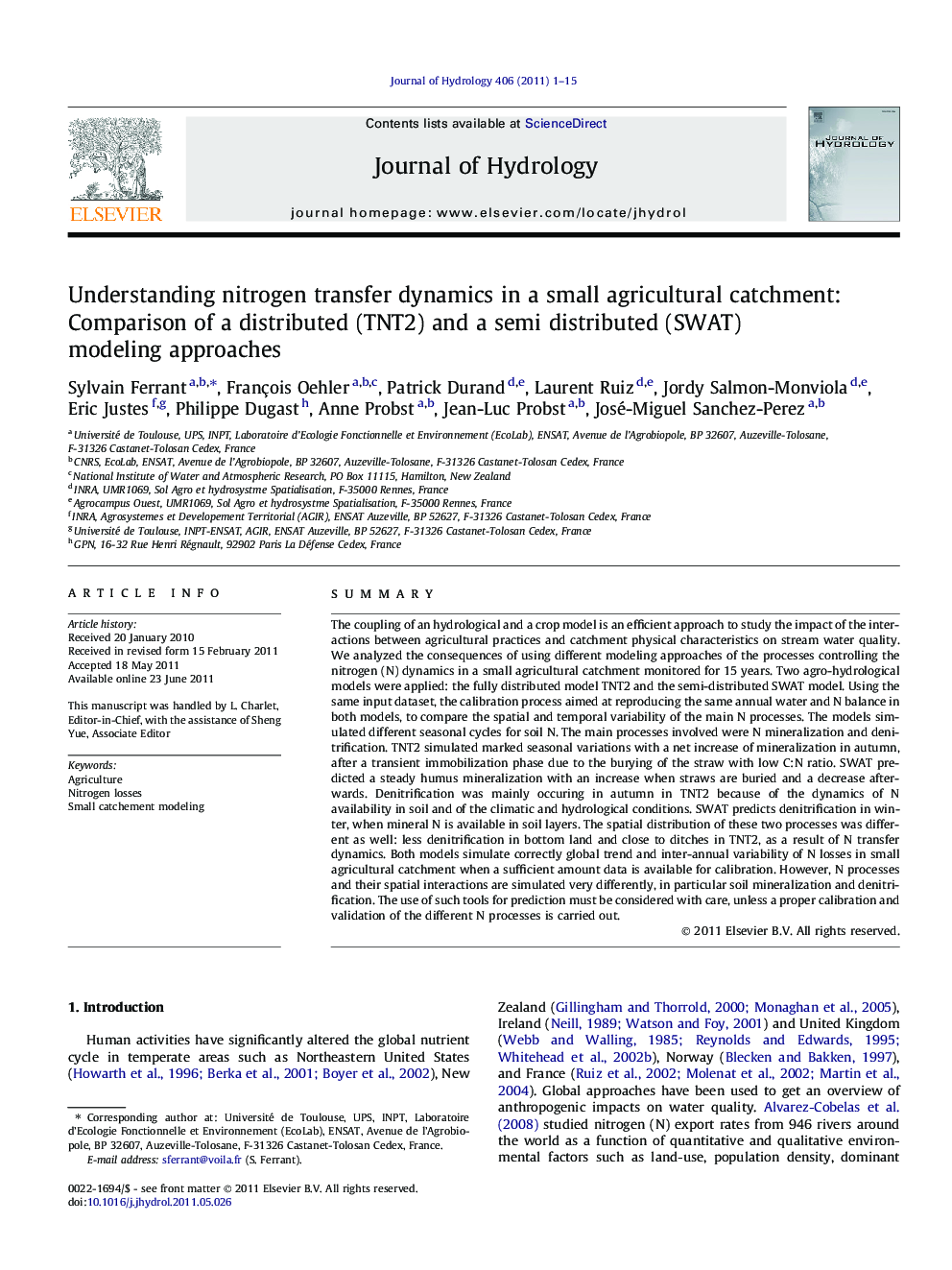| کد مقاله | کد نشریه | سال انتشار | مقاله انگلیسی | نسخه تمام متن |
|---|---|---|---|---|
| 4577679 | 1630016 | 2011 | 15 صفحه PDF | دانلود رایگان |

SummaryThe coupling of an hydrological and a crop model is an efficient approach to study the impact of the interactions between agricultural practices and catchment physical characteristics on stream water quality. We analyzed the consequences of using different modeling approaches of the processes controlling the nitrogen (N) dynamics in a small agricultural catchment monitored for 15 years. Two agro-hydrological models were applied: the fully distributed model TNT2 and the semi-distributed SWAT model. Using the same input dataset, the calibration process aimed at reproducing the same annual water and N balance in both models, to compare the spatial and temporal variability of the main N processes. The models simulated different seasonal cycles for soil N. The main processes involved were N mineralization and denitrification. TNT2 simulated marked seasonal variations with a net increase of mineralization in autumn, after a transient immobilization phase due to the burying of the straw with low C:N ratio. SWAT predicted a steady humus mineralization with an increase when straws are buried and a decrease afterwards. Denitrification was mainly occuring in autumn in TNT2 because of the dynamics of N availability in soil and of the climatic and hydrological conditions. SWAT predicts denitrification in winter, when mineral N is available in soil layers. The spatial distribution of these two processes was different as well: less denitrification in bottom land and close to ditches in TNT2, as a result of N transfer dynamics. Both models simulate correctly global trend and inter-annual variability of N losses in small agricultural catchment when a sufficient amount data is available for calibration. However, N processes and their spatial interactions are simulated very differently, in particular soil mineralization and denitrification. The use of such tools for prediction must be considered with care, unless a proper calibration and validation of the different N processes is carried out.
► We model nitrogen transfer dynamics in an agricultural catchment using two models.
► We examine the consequences of each modeling hypothesis after a proper calibration.
► Both agro-hydrological models simulate same inter-annual trends.
► However, soil mineralization and denitrification are simulated differently.
► The use of such tools for prediction and forecast must be considered with care.
Journal: Journal of Hydrology - Volume 406, Issues 1–2, 18 August 2011, Pages 1–15